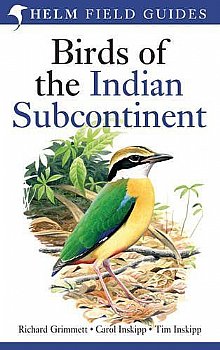India - Tigers and Birding
At three of the finest Tiger Reserves
| Focus | |
|---|---|
| More Info | Heatherlea Leader Dave Pullan plus local guides |
On this holiday the main objective is to find Tigers, with a significant amount of birding and other mammal watching too! We visit some of the most productive Tiger Reserves to maximise your experience, and include two internal flights to make travel easier. Your Leader will be Dave Pullan, an experienced Indian Tour Leader who will travel with you from the UK, supplemented by local naturalist guides. The holiday is timed for early March because Tigers are more active as temperatures increase, though at this time vegetation is not too high, and the midday heat is less of a problem than later in the spring. As an extra detail, we have arranged for six-seater private jeeps at two of the reserves, with a maximum of four guests to each, an exclusive arrangement which is not necessarily standard on some Tiger safaris. Sightseeing is not a focus on this holiday, though an optional extension to Agra and the Taj Mahal can be arranged on request.
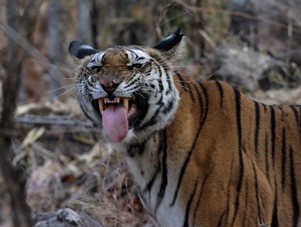
All the Tiger images on this webpage were taken on a Heatherlea holiday,
by Dave Pullan or Kevin Shaw.
We visit the most reliable places for Tigers, taking a total of twelve game drives in three key Reserves, Bandhavgarh, Kanha and Pench. Bandhavgarh is now the leading Tiger Reserve in India, where sightings are regular, and we take six game drives here, which should be very exciting and productive. More detailed information about Indian Tigers and each reserve is given at the bottom of this page.
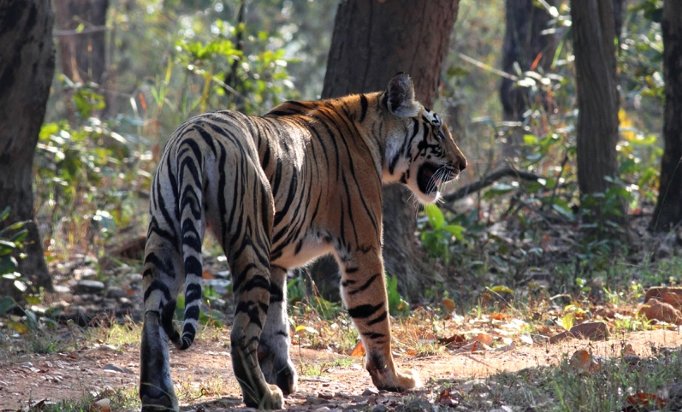
Taken on our 2014 holiday!
Birding will be varied and exciting, and amongst the many species we hope to see are Spotted and Jungle Owlet, Malabar Pied Hornbill, Red Junglefowl (the original chicken!), Brown Fish Owl, Grey-headed Fish Eagle, Purple Sunbird and Blossom-headed Parakeet. We should see many other mammals, perhaps including Leopard, Sloth Bear, two monkey species, Jungle Cat, herds of the delicate Chital (or Spotted Deer) and more including perhaps a pack of the rare Dhole (Indian Wild Dog).
We have carefully designed this holiday so you can relax and savour the huge excitement of these wonderful places. We also include internal flights from Mumbai to Nagpur and Jabalphur to Delhi, which minimises your time road or rail travelling. This itinerary is ideal for the enthusiast who wants to see Tigers as top priority whilst enjoying good birding as an important part of the holiday.
We use good accommodation, comfortable transport in what can be an uncomfortable country, the services of a professional India-based ground agent and an experienced Heatherlea guide. Once you arrive in India, you will be aware of how much all these things add to the experience!
Comparing holidays? Here are a few good things about our trip to take into consideration!
* thirteen game drives including six at Bandhavgarh, probably the best reserve for Tiger.
* two internal flights, which you will appreciate!
* jeeps for our exclusive use at all reserves.
* expert UK-based Guide Dave Pullan will be with you throughout. Dave is particularly useful when negotiating with drivers and guides inside reserves - your Tiger experience may directly benefit!
* pre-flight service saves you time and money, and includes a comfortable airport lounge.
* main tips to hotels are included.
SPECIAL OFFER! For a limited time, we are offering a FREE 'Birding Bites' holiday in Scotland worth £425 with each place taken on this holiday. Read full details here.
OUTLINE ITINERARY
Enjoy your complimentary pre-flight overnight hotel before your holiday begins. Full details from our office!
DAY 1: Fri 3 March DEPART UK
After relaxing in our complimentary airport lounge we depart London Heathrow for Mumbai, late in the evening.
DAY 2: Sat 4 March MUMBAI - NAGPUR - PENCH
On arrival at Mumbai in the morning we transfer for our internal flight to Nagpur, then by road to Pench (two hours). Overnight Pench (two nights).
DAYS 3 - 4: Sun 5 - Mon 6 March PENCH
Pench is one of the quieter Tiger reserves, as yet unspoilt by the madding crowds. We stay here for one and a half days, taking three game drives, with time in the hot middle of the day to relax and enjoy lunch in our comfortable lodge. The Reserve lies in the southern lower reaches of the Satpura Hill Range on the southern border of Madhya Pradesh, and gets its name from the substantial Pench River which bisects it. This impressive river provides food for many bird species, and although dry by high summer, at the time we visit the river can host many thousand hirundines and passerines on migration to Central Asia. Prey concentration around the river make it an attractive hunting ground for Tigers, and we have good chances of quiet, indeed almost private sightings. From a previous Heatherlea visit;
'..... but then one of the reserve guides whispers loudly…Leopard! For a lucky few the Leopard walks away from us, goes behind a mound and then reappears briefly before disappearing for good...... Already we are late leaving the reserve so we pick up speed and that seems to be that. Except for the lucky ones in the last jeep! The same local guide that spotted the Leopard suddenly shouts “Tiger! Tiger!” The brakes are slammed on and we look behind us to see a Tiger walking out from the forest slope onto the track. It crosses, stops to look at us and then continues to a waterhole where it crouches down to drink! The light is fading fast and we leave it walking back into the forest. We make just one more stop… to warn a forest worker who is pushing his bike in the direction of where we last saw the Tiger! ....'
Birdlife here might include Black-rumped Flameback, Coppersmith Barbet, Indian Grey Hornbill, Alexandrine Parakeet, Plum-headed Parakeet, Yellow-footed Green Pigeon, Rufous Treepie, Black-hooded Oriole, Collared Scops Owl, Jungle Owlet and Mottled Wood Owl, Black-capped Kingfisher, White-throated Kingfisher, Sirkeer Malkoha, Golden Oriole, Indian Pond Heron and White-breasted Waterhen amongst many more.
DAYS 4 - 7: Mon 6 - Thurs 9 March KANHA
On Monday we drive to Kanha (six hours), next in our tour of India's greatest Tiger Reserves. Kanha National Park covers 1945 sq miles, dominated by mature stands of sal forest, grassy meadows, valleys and streams. Considered by many to be India's foremost game reserve, it is administered by Project Tiger, and remains an important site for tourists wishing to see the biggest of 'big cats'. Here we could also see Leopard, Indian Wild Dog (Dhole), Gaur, Swamp Deer, and many birds perhaps including White-browed Wagtail, Wire-tailed Swallow, Rufous Treepie, Shikra, Brown Rock Chat, Egyptian Vulture, Long-billed Vulture, Black-hooded Oriole, Racket-tailed Drongo, Oriental Honey Buzzard, Changeable Hawk Eagle, Black-shouldered Kite, Common Woodshrike and Red-throated Flycatcher. Kanha does not have the same high density of Tigers as Bandhavgarh, but is still very good and we should enjoy sightings. Three game drives here. Overnight Kanha (three nights).
DAYS 7 - 10: Thurs 9 - Mon 13 March BANDHAVGARH
We transfer to Bandhavgarh on Thursday (six hours). Set amid rocky hills in the north-central state of Madhya Pradesh, Bandhavgarh National Park is simply THE place for Tigers. We spend four nights here, the most reliable place in all India to regularly experience close encounters. Over 50 tigers are estimated to live here. There is a definite pattern at Bandhavgarh which we understand well, and we do everything possible to get the best tiger sightings. This involves committed drivers and guides who know how to give us the best service! There are two planned game drives per full day, the first at dawn then again late afternoon. The habits of Tigers are well known at Bandhavgarh, where local guides are specialists in tracking and monitoring the animals. Tigers are often quite lazy, and may lie down to rest for hours at a time, regularly giving unforgettable views of this most powerful and awe-inspiring cat.
Six game drives give us every chance of the full Tiger experience, leaving the hot midday period for relaxing and some gentle birding. About 250 bird species are known, and Brown Fish Owl, Grey-headed Fishing Eagle, Malabar Pied Hornbill, Shahin Falcon, Mottled Wood Owl, Orange-headed Thrush and beautiful Tickell's Blue Flycatcher feature among the park's many bird species. Leopards, wolves, wild dogs, jackal, hyena, jungle cat, sambar, chital and muntjac, wild boar, nilgai and chinkara all find a home here too, as do smaller mammals, amphibians and reptiles. Overnight Bandhavgarh (four nights).
DAY 10: Mon 13 March BANDHAVGARH - JABALPUR - DELHI
In the early morning we depart for Jabalpur (four hours), then transfer by air to Delhi. This is an important part of the itinerary - you avoid much of the noise and delay on the roads by doing this. Lunch in-flight, dinner and overnight in Delhi.
DAY 11: Tues 14 March DEPART DELHI/ARRIVE UK
Morning transfer to airport to connect with our flight back to London Heathrow.
........................................
TAJ MAHAL EXTENSION (Optional)
Want to see the sights as well? This isn't part of the main holiday, but can be organised for you on request.
DAY 11: Tues 14 March AGRA
Morning transfer by road from Delhi to Agra (3-4hrs). After lunch, you will begin to explore Agra, Capital of the Mughals until the mid 17th Century, and containing some of their finest architectural monuments. On Monday afternoon you will see the vast complex of palaces, mosques and administrative buildings enclosed within massive walls of red sandstone that make Agra's Red Fort. Situated on the banks of the Yamuna, the marble palaces built by Shah Jehan also provide views of the Taj Mahal. Overnight Agra
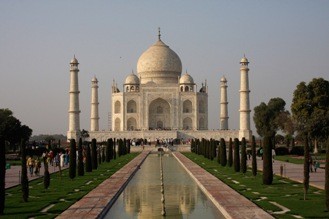
DAY 12: Wed 15 March AGRA - DELHI
Today is one of the highlights of your holiday, a sunrise visit to the beautiful Taj Mahal. Arguably the most beautiful building in the world, the Taj Mahal was constructed between 1632 and 1653 by the grieving Emperor Shah Jehan for his beloved wife Mumtaz Mahal. This spectacular mausoleum with its marble walls exquisitely inlaid with flowers of lapis, cornelian, agate, jade and the verses of the Koran written on its outer walls is one of the wonders of the world. The Taj gardens are a good place for common birds and excellent for Small Mongoose. Birding on the river can be surprisingly good with Temminck’s and Little Stint, sandpipers including Marsh, Avocet, stilts, both redshanks, Ruddy Shelduck and kingfishers. In the afternoon you drive to Delhi, and check in for an overnight stay.
DAY 13: Thurs 16 March DEPART DELHI/ARRIVE UK
Morning transfer to airport to connect with our flight arriving early afternoon.
More Holiday Information:
Accommodation: We stay at comfortable hotels and lodges throughout. All rooms have private facilities. All meals are included (three meals per day). Food is often of 'international' style, though please let us know if you can't eat Indian food.
Walking: Easy throughout. Most bird and mammal-watching away from the lodges is done by jeep, though we use various forms of transport to get around (see below).
Weather: Typically fine and sunny, with temperatures in the region of 15 - 32C. Nights will be cool and it can feel chilly and cold in the mornings. Rainfall is scarce and showers are unlikely to be prolonged.
Flights: Scheduled flight from London Heathrow direct to Mumbai and return from Delhi direct to London Heathrow. Two domestic flights within India (Mumbai - Nagpur, Khajurajo - Delhi) are included on the main itinerary.
Ground Transport: By coach, and 4WD vehicles in the National Parks.
Photos: Good photographic opportunities for birds and mammals.
Also included: Entrance fees at national parks and monuments, sightseeing excursions as per itinerary, main hotel and guide tips and airport taxes, bird and mammal checklist, and services of experienced Heatherlea Leader Dave Pullan and local naturalist guides and drivers.
Your Leaders:
Dave Pullan is a very experienced Tour Leader, and has led holidays in India many times. Dave will be joined by local guides and drivers.

Dave Pullan
What's included in your holiday price:
* return scheduled flight from London Heathrow– Mumbai, Dehli - London Heathrow, airport taxes, baggage and hand luggage up to airline included limit.
* airport transfers, ground transportation, accommodation and meals as specified.
* the services of Heatherlea leader Dave Pullan.
* The Heatherlea Pre-Flight Service offers everything you need at the airport, including hotels, car parking, airport lounges, regional flights, and upgrades. Let Heatherlea take the strain! Pre-flight airport hotel and lounge included free of charge subject to terms and conditions.
FREE ! ‘Birds of the Indian Subcontinent’ by Richard Grimmett, Carol Inskipp and Tim Inskipp, Helm is included in your holiday price.
What's not included in your holiday price:
* Travel insurance
* Indian visa costs
* drinks & other personal expenses, laundry fees
* video camera fees, incidental tips to porters, naturalists, drivers and others (these are not expensive).
* Additional elephant drives if this option is appropriate to see Tigers.
WHY CHOOSE HEATHERLEA?
Our overseas holidays are planned with care to offer great birding and wildlife, led by capable Leaders who really look after you. Every holiday is run the 'Heatherlea Way', and we hope our Overseas Adventures remind you of the quality and care so many of you enjoy in Scotland. That means rewarding and exciting days in the field, and good quality accommodation and meals, with a real flavour of the country we are visiting. Heatherlea always seek to include the personal touches that make all the difference.
Heatherlea holidays are not ‘dawn to dusk’ expeditions. Our less-intensive approach is ideal for those who want to relax whilst experiencing the best wildlife watching, and wherever possible we organise early or late activity on an optional basis. We also take sensible breaks when in very hot places and regular comfort breaks on every holiday whenever possible. All itineraries are planned carefully around the best wildlife opportunities, and you won’t miss out on memorable wildlife, whilst enjoying relaxed, informal days that are great fun.
The really important part of any wildlife holiday is the experience for you, our valued customer. Heatherlea invest in many things to offer you the best possible service;
* We have been organising birding and wildlife holidays for 25 seasons, and have a highly experienced and capable office team. We also offer a telephone and email service outside normal office hours.
* Heatherlea overseas holidays have a maximum of 12 clients per trip, putting the emphasis on personal service, and helping you get the best possible experience.
* Our holidays often include things which others might invite you to pay yourself, for instance Departure Taxes and tips to hotels.
* All elements of our holidays are sold under our own licence, ATOL 6113. Under ‘Flight-Plus’ legislation it is a legal requirement of any tour operator to hold an ATOL licence for the supply of any overseas holiday where a flight is involved, if that holiday includes either overseas accommodation and/or car hire. It can be a criminal offence for an operator to book flights as part of a package without an ATOL licence. Heatherlea also hold full Tour Operator Insurance for your added protection.
* Heatherlea is your complete wildlife holiday provider. Our ‘Back Office’ team can organise all your pre-flight and other travel needs. Our specialists will help you book the right services, at the best price. Book holiday extensions through us, and your ATOL protection is extended further. We don’t charge extra for this service.
* Heatherlea is a limited company, registered in Scotland, and registered to pay VAT (applies to all holidays within the European Union).
Tigers of central India; Madhya Pradesh & Karnataka - some essential background info!
Over the past 100 years Tigers, which once spread from Turkey through Asia to Russia’s eastern seaboard, have lost 93% of their historic range to become one of the world’s most endangered species with a population that has dwindled from over 100000 at the start of the 20th century to below 4000 today.
The density of Tigers in a given area displays a direct correlation to the density of their prey. They require large contiguous areas of habitat which, when coupled with some of the more densely populated places on earth, has caused significant conflict with humans and threat to the Tiger's survival. The enormous demand for Tiger parts has been the driving force behind ongoing poaching, pushing Tigers closer towards the brink. The six remaining subspecies of Tiger are classified as endangered by the IUCN, and global population estimates place the number of wild Tigers between 3062 and 3948 individuals, the imprecise estimation reflecting their cryptic, wide-ranging nature. With most remaining populations occurring in isolated pockets, there is grave concern for their future.
India is home to more than half of the world’s remaining Tigers, its population comprising the subspecies Panthera tigris tigris or Bengal Tiger, whose range extends into Nepal, Bhutan and Bangladesh. A major conservation programme, Project Tiger, initiated in 1973 by then Prime Minister Indira Gandhi, was instrumental in establishing a network of well-monitored reserves with human development categorically forbidden. In 2008 the census declared just 1411 wild Tigers. This prompted a renewed interest in the Project Tiger initiative, with new Tiger reserves declared and funds allocated. The most recent census, published in 2011, estimates a total of 1706 adult Tigers in India. Only 11% of original Tiger habitat remains, with a decline in Tiger occupied area from 93600 sq km to 72800 sq km. These reductions are occurring outside protected areas, isolating the populations within, and this alarming decrease highlights the need for conservation of corridor habitats for long term viability.
Of India’s Tigers, about 450 live in 17 centres of population at the heart of India. Half of India’s forests and several important rivers are here. The region has long been associated with Tigers, hosting hunting parties of Maharajas and colonial rulers, and providing the inspiration for Rudyard Kipling’s ‘Jungle Book’ with its fables of Shere Khan. Today the states of Madhya Pradesh and northern Maharashtra are home to a cluster of India’s finest Tiger reserves, comprising the Bengal Tiger's best chance for survival. Your holiday is centred in three of these special places.
Tiger reserves of this holiday - some essential background info!
Bandhavgarh National Park and Tiger Reserve
Bandhavgarh lies among the Vindhya Hills of Madhya Pradesh on gently undulating land with small hills separated by wide sloping valleys. The valleys contain long linear grasslands flanking the streams, which end in swampy meadows or ‘Bohera’. The vegetation is dominated by moist deciduous forest, primarily Sal, in the valleys and lower slopes gradually evolving into mixed deciduous forest on hills, where the soil in relatively poor, and in the hotter, drier areas of the park to the south and west. Dense bamboo thickets occur in places throughout the park.
Bandhavgarh has been a centre of human settlement for over 2000 years, referenced in ancient texts. In Hindu mythology the two monkey architects who engineered a bridge between Sri Lanka and the mainland for Lord Rama are said to have built Bandhavgarh’s Fort which lies at an elevation of 811m on a natural outcrop dominating the park. Lord Rama is said to have given the fort to his brother, hence the name Bandhavgarh, or ‘brother’s fort’. The oldest evidence of human habitation within the park is a series of caves dug into the sandstone north of the fort, which contain inscriptions dating from the 1st century BC. Bandhavgarh was ruled by a succession of dynasties, including the Chandela Kings who built the famed temples of Khajuraho, until 1617 when the centre of court life moved to Rewa 120kms further north, leaving Bandhavgarh’s forests to rejuvenate. Bandhavgarh then became a ‘Shikargarh’ or royal game preserve for hunting parties involving the Maharaja, for whom it was considered a good omen to shoot tigers. Bandhavgarh was the site of capture of Mohan, the famed white Tiger, by Maharaja Martand Singh in 1951. Estimates show that one in 15000 Bengal Tiger births will result in presentation of the rare recessive gene and the birth of a white Tiger – Mohan was subsequently bred with naturally-coloured Tigers, eventually creating a second generation of white Tigers which have spread to zoos across the world.
Bandhavgarh remained the private property of the Maharaja of Rewa on India’s independence until the 105 sq km were handed over to the state to constitute a national park in 1968 – poaching and cattle-grazing were brought under control and mammal numbers rose dramatically. With the advent of Project Tiger in 1972 and the resultant wave of conservation-minded thought, it was realised that this small area was not adequate to support a viable Tiger population, and three further ranges – Khitauli, Magdhi and Kallawah – were added to the original Tala range, increasing the area to 448 sq km. In 1993 Bandhavgarh was taken into Project Tiger, with the inner core area extended to 694 sq km by the addition of Panpatha Wildlife Sanctuary, and the demarcation of 437 sq km of buffer zone.
Today, tourists are restricted to parts of Khitauli and Magdhi zones and the original Tala zone. The 2011 census estimated that 59 Tigers make this forest block their home. Some estimates suggest up to 22 Tigers are located in the core zone, which equates to one Tiger for every 4.8 sq km. Bandhavgarh is justifiably famed for its Tigers, however in contrast to Kanha and Pench, which are somewhat contiguous, Bandhavgarh is an isolated forest fragment which poses important considerations for its future viability. The park is home to a further 36 species of mammal, more than 250 species of bird and over 80 species of butterfly. Gaur (Indian Bison), have been re-introduced and can be found alongside Sambar, Chital (Spotted Deer), Barking Deer (Indian Muntjac), Wild Boar, Ruddy Mongoose, and Small Indian Civet, with the park’s drier areas also holding Nilgai, Chikara and Chousingha (Four-horned Antelope). Indian Wolf, Striped Hyena, Jungle Cat, Caracal, Honey Badger, Indian Porcupine and Indian Pangolin are among the less commonly sighted mammals. Birds include Lesser Adjutant, Indian Black Ibis, Eurasian Spoonbill, Sarus Crane, Black-winged Stilt, Indian Stone-curlew, Great Thick-knee, Stork-billed and Lesser Pied Kingifshers, Black-bellied and River Terns, Crested Tree-swift, Wire-tailed, Red-rumped and Striated Swallows, White-bellied Minivet, Coppersmith Barbet, Emerald Dove, Bay-backed Shrike, Grey-headed Canary Flycatcher, Black-naped Blue Monarch, White-browed Fantail, Blue-headed Rock-thrush, Indian and Velvet-fronted Nuthatches, Eurasian Wryneck, White-capped and Crested Buntings, and Jungle Bush-quail.
Pench National Park & Tiger Reserve
Pench National Park is the southernmost of four tiger reserves in the southern reaches of the Satpura Hills, straddling the border between the states of Madhya Pradesh and Maharashtra – marked by the Pench River which meanders for 74km through the reserve from north to south.
The rich floral and faunal diversity of this region was documented as far back as the sixteenth century, however subsequent forest clearance for cultivation and dwelling by the local Gond rulers, Marathas, and later the British continued unabated until the land was declared reserved in 1862 in an attempt to halt the indiscriminate destruction. This region was the inspiration behind Rudyard Kipling’s ‘Jungle Book’ whose story of Mowgli was inspired by an account of a boy, supposedly nurtured by wolves in their den, captured in Seoni District in 1831. Many of the book’s locations are true to life, and the book portrays the richness of the jungle of the Central Indian Highlands and its inhabitants, immortalising it print. A sanctuary of 449 sq km was initially formed here in 1977 – Pench National Park was created from this in 1983, becoming India’s 19th Tiger Reserve under the ambitious nationwide conservation program Project Tiger in 1992. Today, Pench encompasses 758 sq km of prime Tiger habitat within its boundaries. Of this the Indira Priyadarshini Pench National Park forms the core zone of 293 sq km, supplemented by the 118 sq km Mowgli Pench Wildlife Sanctuary and surrounded by 347 sq km of buffer zone.
Topography is undulating, with folds and ridges intersected by seasonal streams, flattening out into the floodplain of the Pench River. The hills and valleys are covered by a mosaic of open-canopied tropical moist deciduous and tropical dry deciduous forest types, with bamboo brakes lining the streams and teak locally dominant. The final two villages were relocated from the core zone in 1992 and 1994, their former pastures now constituting open grassy meadows favoured by herbivores. A dam across the Pench River at the park’s southern boundary forms a sizeable reservoir on the Madhya Pradesh side of the river after the monsoon rains. As the dry season progresses the water gradually recedes, leaving fertile green grasslands that attract herbivores and their hunters. In the summer months the river cease to flow altogether, reduced to pools of water which form a vital source of water for all forms of wildlife, including Tiger, from April onwards. Availability of water is the primary factor governing the movement of most forms of wildlife between the higher hills and the lower reaches adjacent to the Pench River.
The habitat favours a high population of deer such as Chital (Spotted Deer) and Sambar, and as a result Pench contains the highest diversity of herbivores in India of 90.3 animals per sq km. Nilgai, Wild Boar, Chinkara (Indian Gazelle), Chowsingha (Four-horned Antelope) and Barking Deer (Indian Muntjac), also occur, and a feature of Pench is its large herds of Gaur (Indian Bison). The primary predator is Tiger, and the 2011 census estimates a population of 65. Common Leopard, Dhole (Wild Dog) and Indian Wolf are more likely seen in peripheral areas. Other wildlife includes Black-faced Langur, Rhesus Macaque, Sloth Bear, Jackal, Common Palm and Small Indian Civets, Bengal Fox, Jungle and rarer Leopard Cats, Striped Hyaena, Porcupine and almost 300 species of bird including Indian Pitta on passage and in summer, Indian Grey and Malabar Pied Hornbills, Greater Racket-tailed and Hair-crested Drongos, Verditer and Tickell’s Blue Flycatchers, Black Redstart, Yellow-throated Sparrow, Indian Silverbill, Scaly-breasted Munia, White-eyed Buzzard, Crested Serpent-eagle, Oriental Honey-buzzard, Grey-headed Fish-eagle, Osprey and four species of Vulture – White-rumped, Indian, Red-headed and Egyptian.
Kanha National Park and Tiger Reserve
Kanha National Park is among the oldest protected areas in India. It was declared a reserve forest in 1879 putting an end to the traditional yet destructive ‘Bewar’ or traditional shifting cultivation of the Gond and Baiga tribes, the region’s original inhabitants, which until then prevailed unhindered. This was further upgraded to the status of wildlife sanctuary with the formation of two reserves – Banjar and Hallon – in 1933 and 1935 respectively. Kanha National Park was created in 1955 primarily for the protection of the only hard-ground race of Barasingha (Swamp Deer) in existence, but also to address the continued decline in the local Tiger population. Kanha was brought into Project Tiger as one of the first nine Tiger Reserves in 1972.
Today Kanha encompasses 1949 sq km, with an inner core of 940 sq km surrounded by a 1009 sq km buffer zone, making it the largest reserve in central India. The park is divided into 5 ranges – Kisli, Kanha, Mukki in the west, and Bhaisanghat and Supkhar in the east. Around 75% of the park’s core area, including the entire eastern sector is closed to the public, while the accessible areas of the park are served by over 700km of tracks. Outlying Phen Wildlife Sanctuary, under unified management of Kanha Tiger Reserve, forms what can be considered a satellite reserve and is of vital importance to the gene pool, allowing exchange of wildlife between the two conservation units. Kanha is in fact part of a contiguous stretch of forest which extends to Pench, having sporadic Tiger presence recorded throughout, and the two Tiger reserves as its major source populations.
The reserve lies along the Maikal range of the Satpura Hills, which forms the eastern boundary of the reserve, in the Mandla and Balaghat Districts of Madhya Pradesh. The valleys of the Hallon and Banjar Rivers, both tributaries of the Narmada, are prominent features of the park’s topography. These valleys are surrounded by a crescent of hills with rocky escarpments, rising to 915m. The spurs are topped by plateaux, locally known as ‘Dadar’, which support vast meadows up to 12 sq km in size and offer panoramic views across the valleys.
The formation of Kanha’s core involved the relocation of 27 tribal villages inhabited by indigenous forest dwellers which were merged with existing villages within and beyond the buffer zone (there are almost 150 villages within the buffer zone today). Old village names were retained in the park’s nomenclature – Kanha, the largest village, giving the park its name. The most significant outcome of this relocation is the vast network of meadows within the park that has developed on sites of earlier human settlement and their surrounding agricultural fields. The varied topography and assorted humus-rich soil types within the park support a variety of vegetation, but the landscape is largely dominated by these grasslands boasting over 150 species of grass. These are lightly covered with woodland containing both moist and dry deciduous forest types, with Sal locally dominant, some densely forested zones, and large tracts of bamboo on hill slopes and along water courses.
The park is dissected by a series of nallahs and well dispersed waterholes which, along with the perennial Hallon River, become the focus of the region’s wildlife in the dry summer months. The grasslands also play a vital role in water conservation, stabilising the soil, holding water and releasing it gradually to replenish groundwater, reducing drought induced stress and allowing wildlife populations to flourish throughout the year.
Kanha is reputed as one of India’s most effectively managed reserves, the result of foresight and long-term planning of its directors. The 2011 census estimated that the reserve is home to 60 breeding adult Tigers, which is a reasonably healthy figure given the park’s area. Kanha’s wide meadows or ‘maidans’ are popular converging points for herbivores, and the species that prey on them, and are so conducive to successful wildlife sightings, particularly in the drier summer months, that Kanha has become one of India’s most frequented reserves and one of the best places in the world to see Tiger. In addition, the mixed habitat supports a good selection of large mammals, reptiles, butterflies, and wild flowers, and it is the excellent all-round wildlife viewing that adds to Kanha’s popularity. 43 species of mammal occur here, most notably five species of deer including the endemic race of Barasingha, recently recorded Mouse Deer and 21000 head of Chital (Spotted Deer) – the primary prey of Tiger, Nilgai (Blue Bull), Chousingha (Four-horned Antelope), Blackbuck, Gaur (Indian Bison), Wild Boar, Dhole (Wild Dog), Sloth Bear, Common Leopard, and rarer Striped Hyena, Jungle Cat, Ratel and Indian Porcupine.
Over 300 species of resident and migratory birds have been recorded here, including a good selection of larks and pipits, Painted Francolin, Red and Painted Spurfowls, Red Junglefowl, Rufous and Heart-spotted Woodpeckers, White-naped Flmaeback, Blue-bearded Bee-eater, Sirkeer Malkoha, Long-tailed and Small Minivets, Indian Scimitar-babbler, Malabar Whistling-thrush, Orange-headed Thrush, Asian Paradise Flycatcher, Buethroat, Zitting and Bright-headed Cisticolas, Indian Yellow Tit, various warblers including Grasshopper and Sulphur-bellied, Yellow-eyed and Tawny-bellied Babblers, Yellow- and Red-wattled Lapwing and Indian Roller, 12 species of owl and a selection of raptors including Black, Tawny and Rufous-bellied Eagles, Crested Hawk-eagle, Red-headed, Peregrine and Laggar Falcons, Pallid and Pied Harriers and Black-winged Kite.
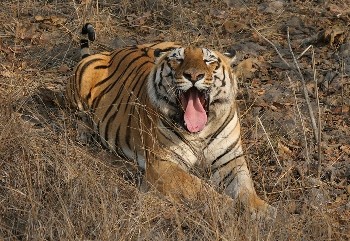
Please note: all itineraries are given as a guide only. Actual holiday content may vary according to the judgement of your guide, and elements beyond our control (eg weather).
Coming Soon
Please note: all itineraries are given as a guide only. Actual holiday content may vary according to the judgement of your guide, and elements beyond our control (eg weather).
More information coming soon.
Why choose Heatherlea for your birding and wildlife holiday?
Our overseas holidays are planned with care to offer great birding and wildlife, led by capable Leaders who really look after you. Every holiday is run the 'Heatherlea Way', and we hope our Overseas Adventures remind you of the quality and care so many of you enjoy in Scotland. That means rewarding and exciting days in the field, and good quality accommodation and meals, with a real flavour of the country we are visiting. Heatherlea always seek to include the personal touches that make all the difference.
Heatherlea holidays are not ‘dawn to dusk’ expeditions. Our less-intensive approach is ideal for those who want to relax whilst experiencing the best wildlife watching, and wherever possible we organise early or late activity on an optional basis. We also take sensible breaks when in very hot places and regular comfort breaks on every holiday whenever possible. All itineraries are planned carefully around the best wildlife opportunities, and you won’t miss out on memorable wildlife, whilst enjoying relaxed, informal days that are great fun.
The really important part of any wildlife holiday is the experience for you, our valued customer. Heatherlea invest in many things to offer you the best possible service;
- We have been organising birding and wildlife holidays for over 30 seasons, and have a highly experienced and capable office team. We also offer a telephone and email service outside normal office hours.
- Heatherlea overseas holidays have a maximum of 12 clients per trip, putting the emphasis on personal service, and helping you get the best possible experience.
- Our holidays often include things which others might invite you to pay yourself, for instance Departure Taxes and tips to hotels.
- All elements of our holidays are sold under our own licence, ATOL 6113. Under ‘Flight-Plus’ legislation it is a legal requirement of any tour operator to hold an ATOL licence for the supply of any overseas holiday where a flight is involved, if that holiday includes either overseas accommodation and/or car hire. It can be a criminal offence for an operator to book flights as part of a package without an ATOL licence. Heatherlea also hold full Tour Operator Insurance for your added protection.
- Heatherlea is your complete wildlife holiday provider. Our ‘Back Office’ team can organise all your pre-flight and other travel needs. Our specialists will help you book the right services, at the best price. Book holiday extensions through us, and your ATOL protection is extended further. We don’t charge extra for this service.
- Heatherlea is a limited company, registered in Scotland, and registered to pay VAT (applies to all holidays within the European Union).
Trip Reports
Coming Soon

